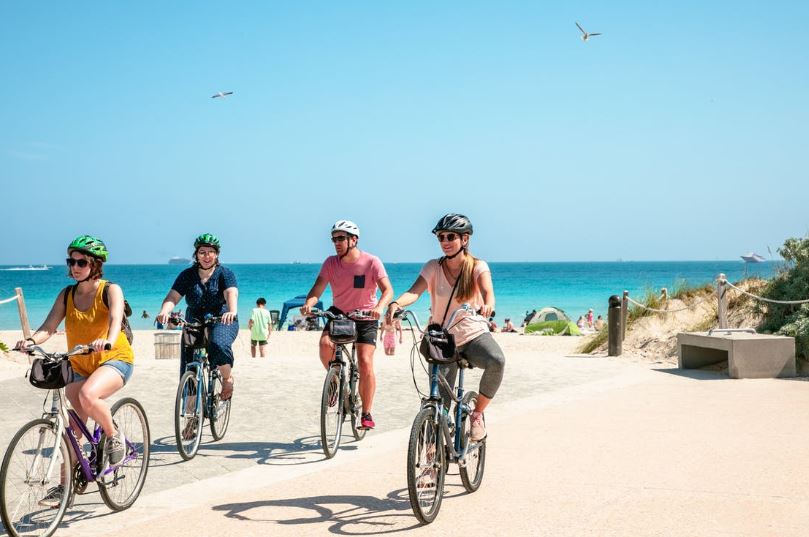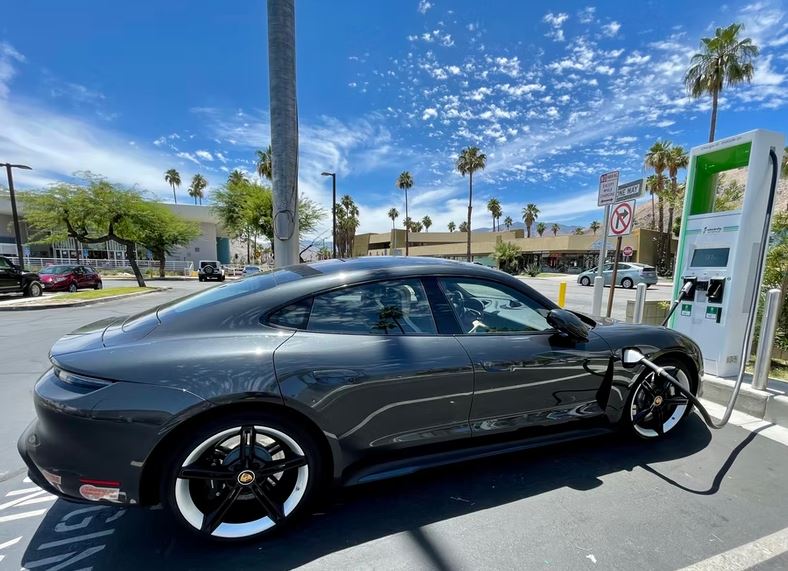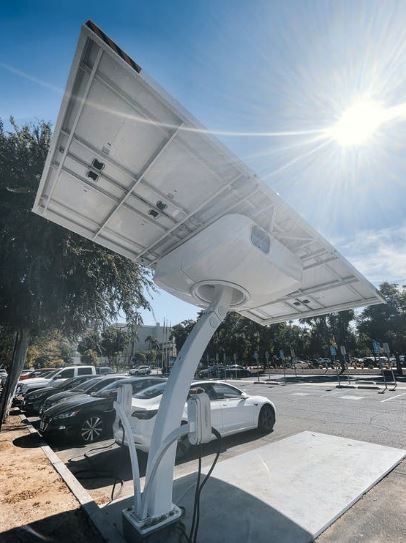What could be a more enjoyable way to spend a day than riding a bicycle through areas that are inaccessible to automobiles and golf carts? On a fat-tire bicycle or effortlessly perched atop an electric bike or scooter, you can ride the beach, avoid the waves, and let the salty air and sunshine lead the way. Alternatively, you can cruise the streets with ease. In this town, there are a lot of sidewalks, and the sidewalks that run parallel to State Highway 361 are extra wide. Riding a bike is an easy and fun way to get around town and even to the top beaches within the country. The place is just huge and exciting to explore, and it’s a great way to get some exercise while you’re at it. If you want to check out some of your favorite shops or try out that restaurant you’ve been hearing so much about, riding a bike is the way to go.
There are a few things you should know before renting a bike for a couple of hours, a day, or days. What is the best bike for you? How do you know if your bicycle is the correct size? What are the rules for renting bikes?
This article will guide you through the ins and outs of renting bikes and electric cars.
Some Tips for Bike Rental
1. Payment
Payment varies depending on the rental company, but most bikes can be rented with a credit card for an hourly or daily fee. Memberships typically include 60-minute rides, though a 24-hour option is available. Bikes must be returned to the rental shop or a specific bike station around the city after the membership expires. Most bike shops in the city accept cash or credit cards as payment. However, if you intend to make reservations online, a credit card is the way to go. Some shops will let you reserve a bike for pick-up ahead of time, and you may also be able to pay cash in person.
2. Treat the Rented Bike Like Your Own
By exercising extreme caution while using a rental bicycle, you can avoid incurring the additional costs associated with repairing any damage. Always keep in mind to give way to pedestrians, avoid riding on sidewalks, obey traffic lights, and ride in the same direction as oncoming traffic. When riding a bicycle that you rented, make sure to adhere to these few basic guidelines to protect both yourself and the bicycle from harm and to have a positive overall experience.
3. Know How to Stay Safe
Make sure you’re familiar with biking rules and regulations, as well as how to stay safe while riding around town, before renting a bike. Wearing a helmet, riding in the same direction as traffic, knowing your hand signals, and making sure your bike has proper lights if you plan on riding at night are some of the more obvious and important things to remember. Always double-check a bike before renting it to ensure that all the equipment is in working order like making sure the tires are inflated, the brakes work, etc. Keep an eye out for oncoming traffic and yield when necessary. Wearing clothing that makes you more visible, such as bright colors or something that reflects light, is another option.
4. Bicycle Parking
Hundreds of bike racks for public use have been installed throughout the county. Bicycles are a great alternative to driving because they allow you to get around town without having to worry about finding parking. So, if you need to take a break from biking, simply park your rented bicycle. One thing to keep in mind is that B-Cycles must be parked at a charging station, or you will be charged for the rental even if you are not biking. To avoid paying idle fees, consider renting a bicycle from a real bike shop rather than a charging station.
Some Tips for Renting Electric Car
1. Determine How You’ll Use It
What are your plans for using the rental car that you have? Will you be taking your family on a beach vacation that lasts for a full week? The way the vehicle is utilized, or perhaps more accurately, the rate at which you believe the battery will be depleted, is essential to determine the next step, which is to determine how and where to charge the battery. Range becomes an issue here as well, so make sure that the vehicle you choose is appropriate for the way you plan to use the car.
2. Find the EV’s Driving Range
How far can the vehicle go on a charge is the most important thing to know. What’s the significance of this? While range isn’t important in a gas car because refueling can be done in minutes at thousands of stations, for an EV, how far you can go on a single charge is very important because recharging can take anywhere from 30 minutes to days, depending on what you’ve rented and where you plug it in.
Most EV rentals have a range of over 200 miles, but that varies based on how, when, and where you drive. If you choose to drive on the beaches of Texas or if you drive it like a sports car or in cold weather, you won’t get the advertised range. If you drive carefully, slowly, in warmer weather, and efficiently, you’ll get the advertised range.
3. Learn How to Work It
Trust us when we say that reviewing materials in advance of your rental will save you a lot of trouble. If you’ve never touched a Tesla, for example, you should know that they don’t work like regular cars. Starting from how it opens to how it starts and how you adjust the mirrors to how you use the windshield wipers, Tesla very much does its own thing, there will be a learning curve when you use one for the first time.
The manufacturer has videos, and Hertz has a comprehensive FAQ on how to use one. Much of how a Tesla works is not intuitive and differs significantly from how other cars work. Other vehicles from brands such as Kia and Nissan operate more like conventional cars, making it easier to simply “get in and go,” but there’s a reason Tesla outsells all competitors in this category; its vehicles are unique in many ways.
4. Determine How You’ll Charge
Find out first what specifications the vehicle needs. Level 2 chargers are the public chargers that are commonly found in parking garages, hotels, and shopping malls. These chargers are compatible with all-electric vehicles (EVs). You should operate under the assumption that these can extend your EV’s range by approximately 20 miles per hour; some may be faster, and some may be slower. Assume that these chargers can add anywhere from 10 to 20 miles per minute to your EV’s range when it is plugged into one; most new electric vehicles have the capability of using a DC fast charger, which are more powerful chargers that can recharge the vehicle a lot more quickly than the slower Level 2 chargers.
5. Find EV Chargers
Download an app like PlugShare to your smartphone before you leave for your trip. This app will allow you to see what different charging options are available, as well as where they are located. You should give the hotel that you are staying at a call and ask if they have any electric vehicle charging stations or if they know of any nearby. If you’re going to be driving from one city to another, you should figure out where you’re going to stop so that you can charge your car and factor that time into your trip planning. There are mobile applications that can assist drivers of electric vehicles (EVs) that do not come equipped with this type of trip planning in determining the path that offers the greatest number of available chargers.






